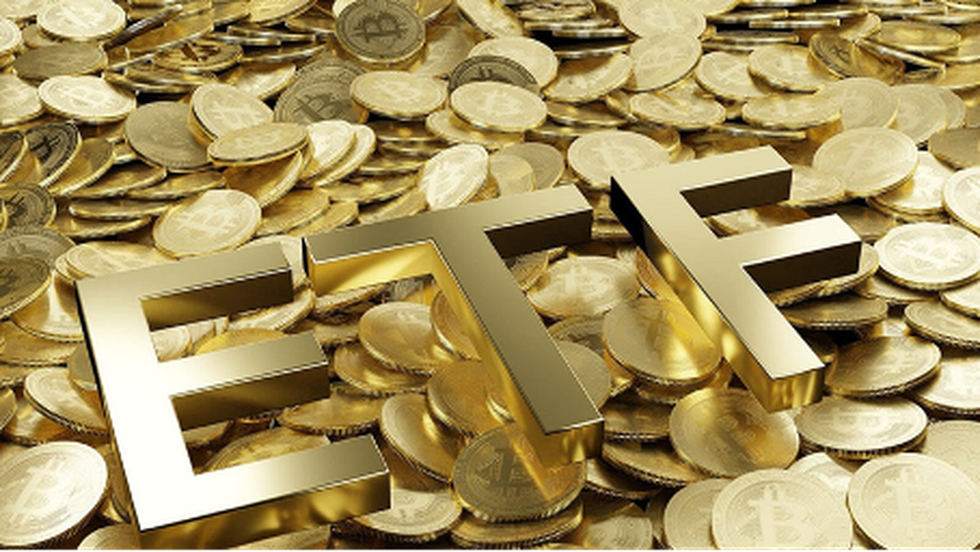
About Gold Exchange Traded Funds (Gold ETFs):
- They are commodity-based exchange-traded funds with an underlying asset as gold.
- They are passive investment instruments that are based on gold prices and invest in gold bullion.
- Gold ETFs are units representing physical gold which may be in paper or dematerialised form.
- One Gold ETF unit is equal to 1 gram of gold and is backed by physical gold of very high purity.
- Gold ETFs combine the flexibility of stock investment and the simplicity of gold investments.
- They are listed and traded on the National Stock Exchange of India (NSE) and Bombay Stock Exchange Ltd. (BSE) like a stock of any company.
- It can be bought and sold continuously at market prices.
- There is a complete transparency on the holdings of a Gold ETF due to its direct gold pricing.
- ETFs have much lower expenses as compared to physical gold investments.
What is an Exchange Traded Fund (ETF)?
- An ETF is a collection of investments such as equities or bonds.
- It is a basket of securities that trades on an exchange just like a stock does.
- ETF share prices fluctuate all day as the ETF is bought and sold, which is different from mutual funds, which only trade once a day after the market closes.
- ETFs can contain all types of investments, including stocks, commodities, or bonds
- They have cheaper fees than other types of funds.
What is Passive Investment?
- It is an investment strategy wherein investors buy securities that mirror stock market indexes and hold them long-term.
- It is a strategy that focuses on replicating the index performance as opposed to daily buying and selling.
- Passive investing seeks to avoid the management fees and high transaction costs that frequent trading can cause.

About Machu Picchu:
- It is a 15th-century Inca site.
- Location: Machu Picchu is located 50 miles (80 km) northwest of Cuzco, Peru, in the Cordillera de Vilcabamba of the Andes Mountains.
- Machu Picchu is believed to have been built by Pachacuti Inca Yupanqui, the ninth ruler of the Inca, in the mid-1400s.
- It is made up of temples, palaces, terraces, monuments, complexes and walls.
- The city is divided into a lower and upper part, separating the farming from residential areas, with a large square between the two.
- Machu Picchu was abandoned when the Inca Empire was conquered by the Spaniards in the sixteenth century.
- Machu Picchu was rediscovered in 1911 by the American explorer Hiram Bingham.
- It was designated a UNESCO World Heritage site in 1983.
What is the Inca Civilization?
- Inca Civilization flourished in ancient Peru between c. 1400 and 1533 CE.
- It is the largest empire ever seen in the Americas and the largest in the world at that time.
- Inca society was highly stratified.
- The emperor ruled with the aid of an aristocratic bureaucracy.
- Inca technology and architecture were highly developed.
- Their economy was based on agriculture.
- The Inca religion combined features of animism, fetishism, and the worship of nature gods.
- The Inca language Quechua is still spoken by around eight million people in the world.
- The descendants of the Inca are the present-day Quechua-speaking peasants of the Andes, who constitute around 45 percent of the population of Peru.
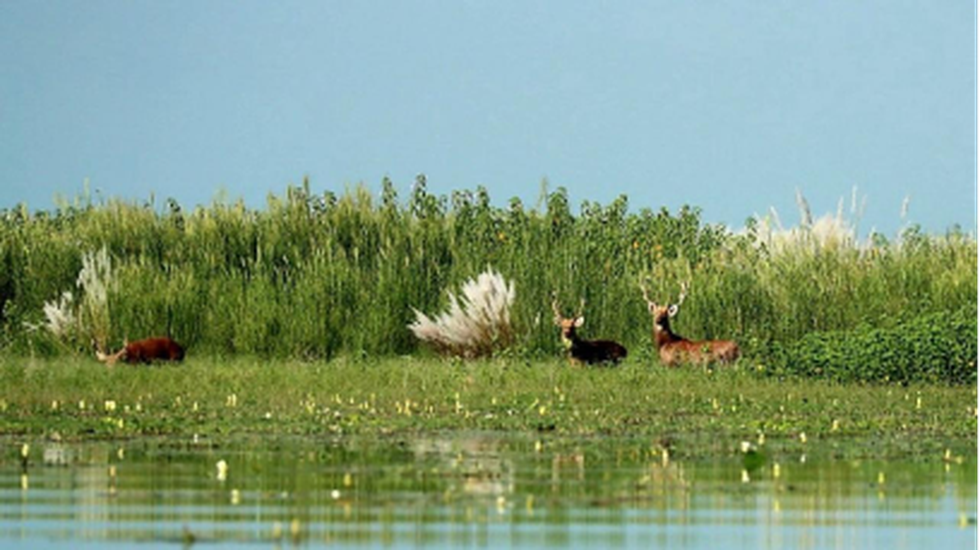
About Haiderpur wetland:
- It is a human-made wetland that was formed in 1984 by the construction of the Madhya Ganga Barrage on a floodplain of the River Ganga.
- Location: Muzaffarnagar-Bijnor border in Uttar Pradesh.
- It is located within the boundaries of Hastinapur Wildlife Sanctuary.
- This provides habitat for various animal and plant species, including around 30 species of plants, 300 species of birds (102 waterbirds), 40 fish and more than ten mammal species.
- It supports more than 15 globally threatened species, such as the critically endangered gharial and the endangered hog deer, black-bellied tern, steppe eagle, Indian skimmer and gold mahseer.
- It has been recognised as the 47th Ramsar site of India in 2021.
About Ramsar Convention (Convention on Wetlands of International Importance):
- It is an intergovernmental treaty that provides the framework for the conservation and wise use of wetlands and their resources.
- The Convention was adopted in the Iranian city of Ramsar in 1971 and came into force in 1975.
- It is the only global treaty that focuses specifically on wetlands.
- One key instrument of the Convention is its List of Wetlands of International Importance (the “Ramsar List”).

What is 13th Amendment to the Constitution of Sri Lanka:
- It is an outcome of the India-Sri Lanka Peace Accord of July 1987, signed by the then Prime Minister Rajiv Gandhi and President J.R. Jayawardene.
- It was an attempt to resolve Sri Lanka’s ethnic conflict that had aggravated into a full-fledged civil war, between the armed forces and the Liberation Tigers of Tamil Eelam.
- The 13th Amendment, led to the creation of Provincial Councils.
- It assured a power sharing arrangement to enable all nine provinces in the country, including Sinhala majority areas, to self-govern.
- Subjects such as education, health, agriculture, housing, land and police are devolved to the provincial administrations.
- It made Tamil one of Sri Lanka’s official languages and English, a link language.
- The amendment has never been fully implemented because of the overriding powers given to the President.
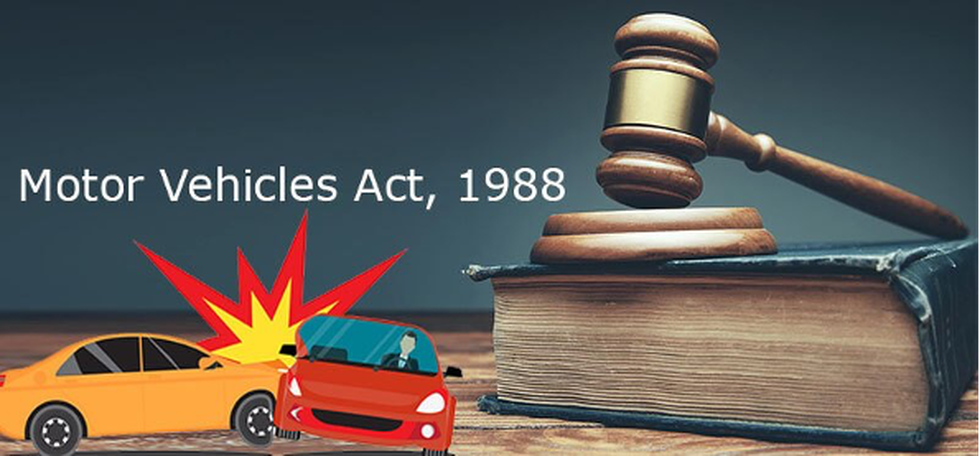
About the Motor Vehicle Act of 1988:
- It is a comprehensive Act that has replaced the Motor Vehicle Act, 1939.
- It was implemented on 1st July 1989.
- The act covers all aspects of road transport vehicles, such as registration, licensing, regulation, claims, compensation in case of accident etc.
- The act regulates all cases related to Motor Accidents all over India.
- An person injured in a motor accident or legal representatives of a person deceased in a motor accident can apply for compensation under Motor Vehicles Act, 1988.
- The act was amended in 2019 and 2022. Both these amendments deal with third-party insurance and claims management, including filing claims with the Motor Accident Claim Tribunal.
Motor Accident Claim Tribunal:
- It was created by the Motor Vehicles Act, 1988.
- It has been constituted to provide speedier remedy to the victims of accidents by motor vehicles.
- There is no time limit for filing motor vehicle accidents claims.
- A State Government can constitute one or more Motor Accidents Claims Tribunals.
- Civil Courts do not have jurisdiction in the matters which concerns the Motor Accidents Claims Tribunal.
- The appeals against the Claims Tribunals will lie before the High Courts.
- The appeal is limited by time and has to be filed in the High Court within 90 days from the date of award of the Claims Tribunal.
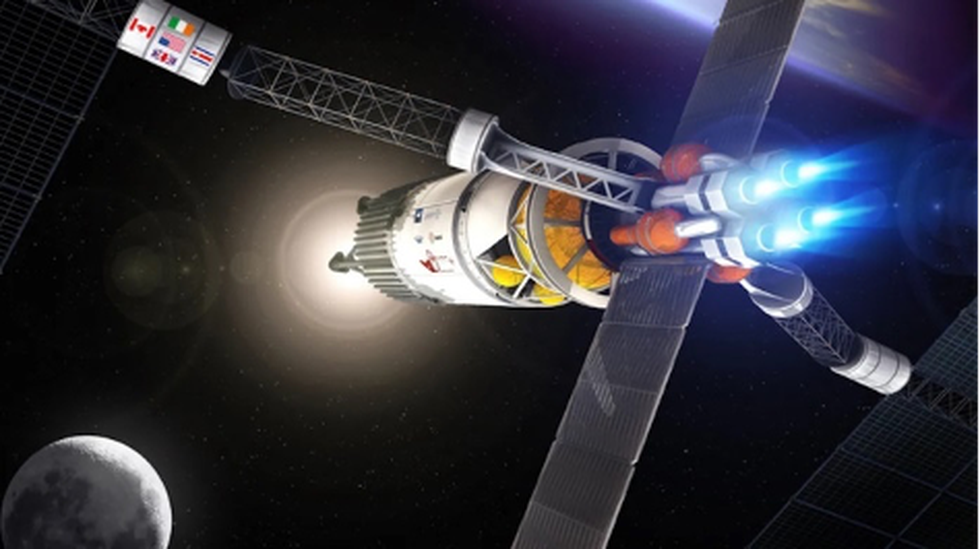
About Bimodal nuclear propulsion:
- Bimodal nuclear propulsion is a two-part system that includes; Nuclear Thermal and Nuclear Electric Propulsion (NTP /NEP).
- It uses a wave rotor topping cycle.
How will nuclear propulsion work?
- The Nuclear Thermal system includes a nuclear reactor that will heat liquid hydrogen (LH2) propellant and turn it into ionised hydrogen gas (plasma) that will then be channelled through a nozzle to generate thrust.
- Nuclear Electric Propulsion depends on a nuclear reactor to provide electricity to a Hall-Effect thruster (ion engine), which will generate an electromagnetic field that will ionise and accelerate an inert gas to create thrust.
- Advantages: Fuel efficiency, a higher specific impulse, rating and unlimited energy density.

About Pradhan Mantri Rashtriya Bal Puraskar:
- It is given under two categories.
- Bal Shakti Puraskar: This award is given by the Government of India every year to recognize exceptional achievements of children in various fields namely innovation, scholastic achievements, social service, arts & culture, sports and bravery.
- Eligibility criteria: A child who is an Indian Citizenand residing in India and is between 5-18 years of age.
- Award: The award consists of a medal, a cash prize of Rs. 1,00,000, book vouchers worth Rs.10,000, a certificate and a citation.
- It was started in 1996 as the National Child Award for Exceptional Achievement, and renamed in 2018 as Bal Shakti Puraskar.
- Bal Kalyan Puraskar: This is given as recognition to Individuals and Institutions, who have made an outstanding contribution towards service for children in the field of child development, child protection and child welfare.
- Eligibility criteria: An individual who is an Indian Citizen residing in India and should have attained the age of 18 years or above (as of 31st August of the respective year). S/he should have worked for the cause of children for not less than 7 years.
- The institution should not be entirely funded by the government and should have been in the field of child welfare for 10 years and performing consistently in the field.
- Award: The awards are given in each of the two categories - Individual and Institution - along with cash prizes (Rs. 1,00, 000 and Rs. 5,00, 000 respectively).
- It was started in 1979 as the National Child Welfare Awards and in 2018 renamed it as Bal Kalyan Puraskar.

About Planet Parade:
- This is the phenomenon wherein the planets Mercury, Venus, Mars, Jupiter, and Saturn were visible to the naked eye from Earth.
- This planetary meet-up, also known as a conjunction, makes the two planets appear close together or even touch in the Earth's night sky.
- Despite being millions of kilometres apart, the planets seem to occupy the same space in the night sky because of their alignment.
- Just after sunset in the west, a conjunction of Venus and Saturn were 0.4 degrees apart as seen from earth.
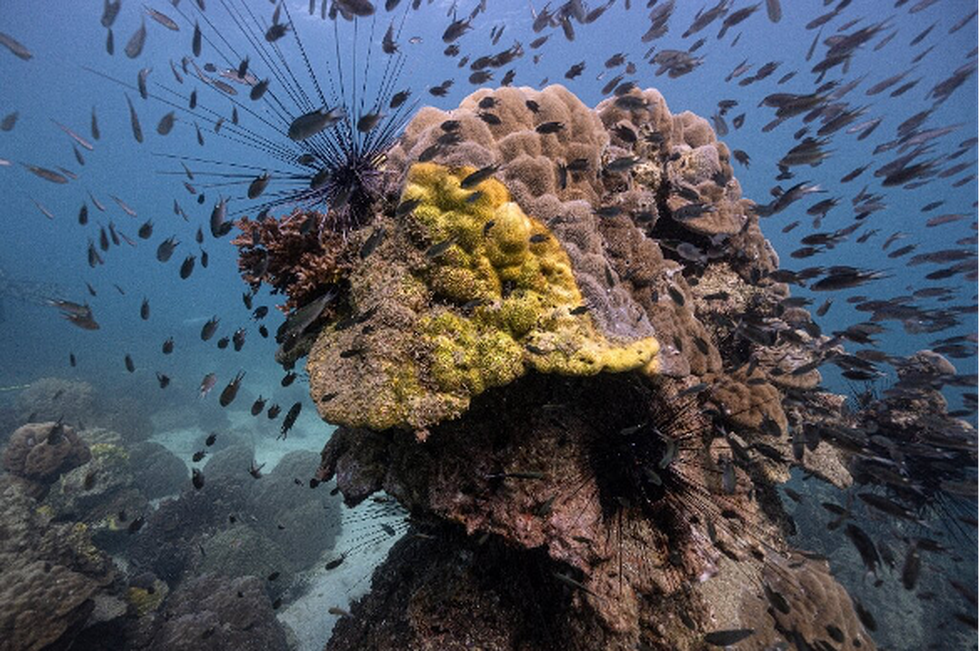
About Yellow band Disease:
- Yellow-band disease—named for the colour it turns corals before destroying them—was first spotted decades ago and has caused widespread damage to reefs in the
- There is no known cure for this disease and unlike coral, bleaching corals will not be restored once they get infected by this disease.
- Scientists believe overfishing, pollution and rising water temperatures because of climate change may be making the reefs more vulnerable to yellow-band disease.

About Groningen Gas Field:
- The Groningen gas field is natural in Groningen province in the northeastern part of the Netherlands.
- It is the largest natural gas field in Europe.
- This region of Groningen in the Netherlands has a gas field that began operations in 1963.
- During the 1980s, the area saw numerous earthquakes - minor enough to avoid large damage but big enough for local buildings to develop cracks.
- Following these quakes, the Dutch government had earlier said that it would shutter the field in response to local protests.
- In Groningen, the ground subsiding has been caused by extraction alone over several years.
- Such extraction causes rocks to contract - as the pores get to hold fewer and fewer hydrocarbons over time.





























































































































































.png)
.png)
.png)
.png)
.png)


.png)
.png)
.png)





.png)
.png)






.png)
.png)
.png)
.png)
.png)
.png)
.png)
.png)
.png)

.png)







.png)
.png)


.png)
.png)
.png)


.png)

.png)
.png)





.jpg)

.png)
.png)


.png)

.png)
.png)
.png)

.jpg)

.jpg)


.png)

.png)
.png)
.png)
.png)
.png)
.png)
.png)
.png)
.png)
.png)




.png)

.png)





.png)
.png)
.png)
.png)
.png)
.png)
.png)
.png)
.png)
.png)
.jpg)
.jpg)

.png)
.png)
.png)
.png)
.png)
.png)
.png)
.png)
.png)
.png)
.png)
.png)
.png)
.png)
.png)
.png)
.png)
.png)
.png)
.png)
.png)
.png)



.png)
.png)

.jpg)
.jpg)


.jpg)
.jpg)
.jpg)
.jpg)
.jpg)

.jpg)








.jpg)
.jpg)
.jpg)
.jpg)
.jpg)

















.jpg)
.jpg)







.jpg)















.jpg)
.jpg)






























































































.jpg)
.jpg)


























.jpg)

.jpg)










.jpg)








.jpg)




.jpg)










.jpg)


















.jpg)












































.jpg)














.jpg)
.jpg)
.jpg)





.jpg)

.jpg)
.jpg)





































































.jpg)


































.jpg)
.jpg)
















































.jpg)












.jpg)


.jpg)




.jpg)
.jpg)
.jpg)

.jpg)
.jpg)
.jpg)
.jpg)

.jpg)
.jpg)
.jpg)

.jpg)
.jpg)
.jpg)
.jpg)
.jpg)
.jpg)
.jpg)
.jpg)

.jpg)


.jpg)
.jpg)
.jpg)
.jpg)
.jpg)
.jpg)
.jpg)
.jpg)
.jpg)
.jpg)











.jpg)
.jpg)





.jpg)
.jpg)
.jpg)
























.jpg)
























.jpg)









.jpg)
.jpg)







.jpg)
.jpg)









































.jpg)
.jpg)
.jpg)
.jpg)
.jpg)

.jpg)
.jpg)
.jpg)
.jpg)
.jpg)


.jpg)
.jpg)
.jpg)
.jpg)
.jpg)

.jpg)
.jpg)
.jpg)
.jpg)
.jpg)
.jpg)
.jpg)
.jpg)
.jpg)
.jpg)
.png)

.png)
.png)

.png)
.png)
.png)
.png)


.jpg)
.jpg)

.jpg)
.jpg)
.jpg)

.png)
.png)
.png)
.png)
.png)
.png)
.png)

.png)
.png)
.png)
.png)
.png)
.png)
.png)
.png)
.png)
.png)





































































-min.png)



.png)




.png)








































